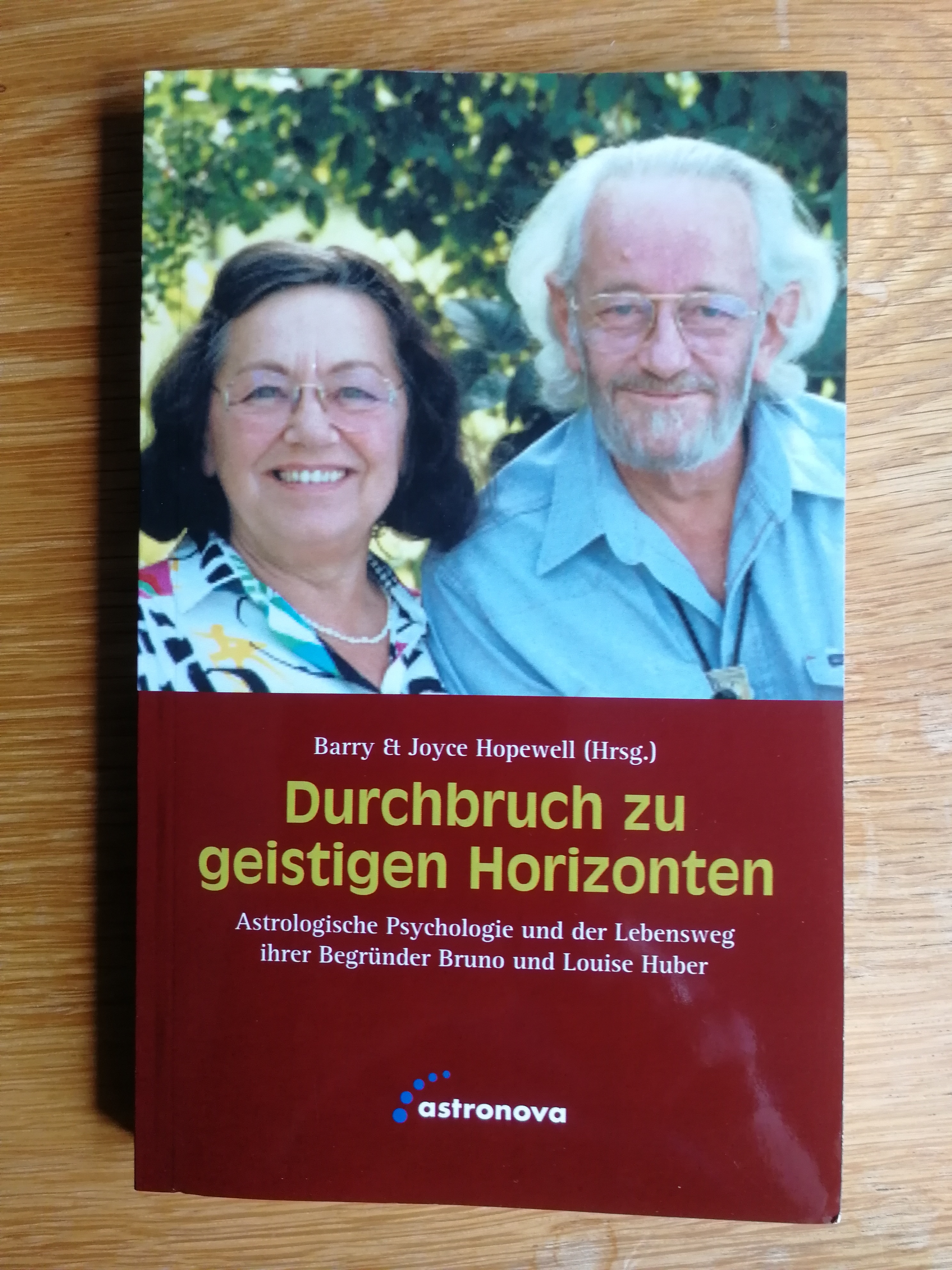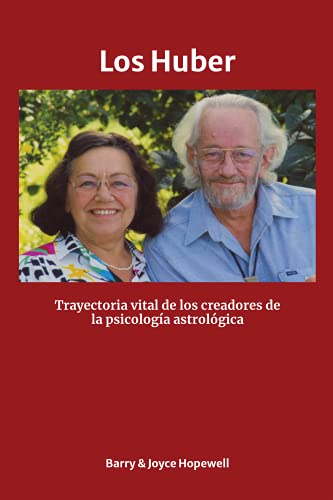This book review is a guest blog post, written by Caroline Adlestone, Editor of "Conjunction". I'm pleased to be sharing it since Caroline has spoken warmly about the book, clearly setting out why she liked it, along with outlining what readers might gain from it.
A
“New Science of Man”,
Review
of Piercing
the Eggshell, The Hubers and their Astrological Psychology, edited
by Barry and Joyce Hopewell.
“We
envisioned a nobler man in a nobler world, and realised that we both
wanted to contribute actively to increasing the quality of human
consciousness.” So said Bruno Huber as he looked back on the lives
of himself and Louise in 1987, 19 years after the formation of API
Switzerland.
Much of this biography of the extraordinary life and
work of the Hubers is recorded in their own words. This direct
transmission enriches the book and gives us a personal voice of Bruno
and Louise Huber. The many writings from which the material is
sourced are deftly and seamlessly incorporated chronologically into a
compelling narrative. We are taken on a journey of wonder, excitement
and sometimes intense, story-telling. In 12 chapters the reader is
taken through the lives of the Hubers, the development of
astrological psychology, the creation and growth of API Switzerland
and its influence throughout the world.
The
title of the book Piercing
the Eggshell
is a reference to the possibility of a connection to the higher self
or soul by breaking through the encapsulated ego. It refers to
Roberto Assagioli’s Egg model and Bruno’s subsequent Amphora
diagram which incorporates the astrological symbols of the planets.
 |
Bruno and Louise Huber
|
The
book is beautifully illustrated throughout and the many photographs
add to the intimacy of the story being told. The use of charts
adroitly gives depth and added resonance to the storyline for those
who can understand and gives clear and tangible examples of how the
method works to those unfamiliar with astrological psychology. And
for non-Huber astrologers there is a very lucid description of the
Huber method in chapter one. The clarity given to the technical side
of astrological psychology means this book can be read by everyone.
The
history of the many translated and truncated publications of the
Hubers is expertly explained by the editors, Barry and Joyce, who have been
publishers of the Huber's books in English since 2003.
The
Hubers’ early life story is told from the world war period in which
they grew up, emerging from the Third Reich into a world in which
they both felt as though they wanted to understand and to help
people. The story continues to their fated meeting – six months
before she met him Louise had seen Bruno in a meditation – he fell
in love and had to marry her, and only her. We follow them through
their setting up of the Arcane School in Geneva and their formative
and magical years in Florence in a stimulating spiritual environment
with Roberto Assagioli. Their dedication and tenacity was always
driven by their single-focussed goal.
In a literal sense, Bruno once
remarkably journeyed 700km on his bicycle across the Alps over a 2500
metre high pass to be with Assagioli in Arezzo as there was no other
way of getting there. Those early days were hugely interesting,
fertile and creative but they were also fraught with insecurity of
the unknown. Something that to Louise was not easy. Their
own individual personal growth is shared by each of them with
candour. The depth of their own understanding of themselves and the
workings of their inner minds. seems natural when you consider how
Bruno and Louise’s youthful lives were steeped in many kinds of
exploratory depth psychologies and spiritual development. And also
how in the Huber method we look deeply into ourselves through chart
interpretation.
Something
that the book especially exudes is the joyful experience of
connections with the Hubers, whether learning, teaching, or
socialising, life in all its dimensions and colour is present in
these pages.
Bruno’s
process of coming to the gestalt in the chart is unveiled as it
develops. The book draws the reader to a recognition of the
development of the unique and stunning mandalas and the clear visual
impact of the charts that we now recognise as Huber charts. The
charts came about as a result of Bruno’s many artistic interests
and pursuits as well as his artistic nature. The study of colour and
his visual sensitivity are aspects that led to the creation of the
charts.
 |
Chart of Bruno Huber
|
Spanish astrologer Lola Ferrer sums it up beautifully when she speaks of the
Beauty that came through Bruno, “that inborn ability to connect
with what is harmonious and bring it to earth.”
She
describes the chart as “a perfect piece of cosmos arrested in
time.”
“Bruno’s
clear and artistic design of the horoscope … the colour lines that
could geometrically reveal the innermost soul of the moment captured
in the chart.”
The
artistic qualities blended beautifully with the scientific
innovations. It was this combination of intuitive and technical
aspects that brought about the uniqueness of astrological psychology.
There
are many gems that come to light in the book, such as details of life
in Switzerland. Joyce’s description of the physical API school, as she
descriptively takes us through the garden and the house, is precious
and provides wonderful memories and experiences related “before
they are lost in the mists of time.”
 |
International group of students at the API Centre, Adliswil
|
We
see the nature of Bruno and Louise’s polarised personalities and
their relationship. Bruno the scientist,
psychologist and thinker and Louise, the organiser with her deep
esoteric roots, with evolution as the all-embracing goal to which she
was committed in all she did, complemented each other. Any crises in
the relationship were seen as opportunities for growth. And “the
little game of partnership” (Louise) was subsumed in their higher
objective of building AP.I.
The
position of astrological psychology within the wider world of
astrology is elucidated in the book. In some ways astrological
psychology can be seen as a niche area within the astrological world
and this subject is not shied away from in the book. The Hubers
created a “new science”, which is a “closed system” and does
not work with other astrological systems. That astrological
psychology is not predictive and is for self-awareness is well-known.
But it differs from other astrologies in that it does not rely on the
traditional medieval view of astrology. Bruno had a mistrust of the
“old patterned astrology” and it deeply mattered to him that the
old methods didn’t fit psychologically.
 |
Bruno teaching
|
Astrological psychology is a deeply researched form of psychology and Bruno
encouraged questioning and constant research into the system.He
was insistent that we take nothing at face value without
experimenting with it in our own charts and those of others. This is
the sort of research that was so important to him. Needless to say,
this is exciting and inspiring and I am sure will lead many to want
to discover for themselves what it’s all about.
It
is notable that the success of the English-speaking Huber School is
highlighted, not least that the English Course manuals
were translated into
German!,
and then into Spanish, and were instrumental to API teaching, and
shows the professionalism of the English Huber School from the very
beginning.
The
depth of sincerity of all of those whose lives were touched by the
Hubers and their dedication to the Huber method is especially felt in
the crescendo of outpouring of love and gratitude from those who knew
them in the penultimate chapter of the book.
I
didn’t want the book to end but fortunately we have several volumes
of the Hubers’ work to enjoy for years to come. And we can keep on
experimenting with the Huber method, the work is endless.



























